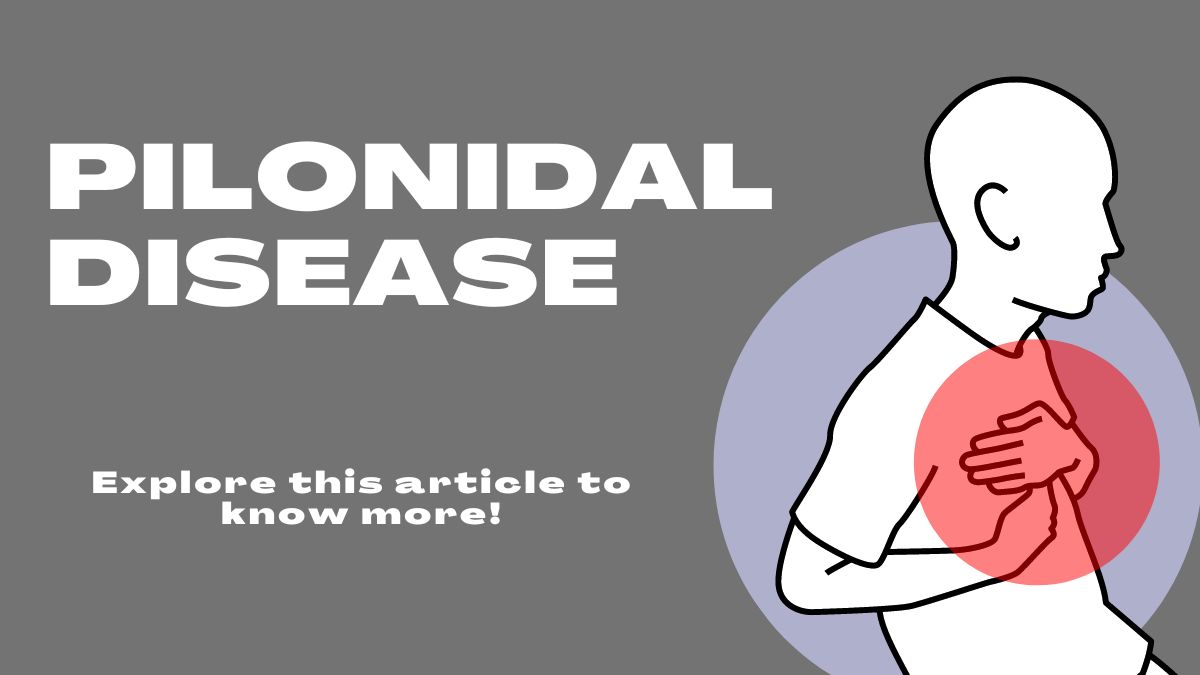Undoubtedly, obesity leads to various health conditions, and pilonidal disease is no exception. Though the exact cause of pilonidal disease remains unclear, several risk factors have been identified, and one such factor is obesity. Basically, it can result in the development and recurrence of pilonidal disease. So, let us here explore the connection between pilonidal disease and obesity, highlighting the impact of excessive weight on disease development and progression. Furthermore, we will discuss potential solutions and strategies to mitigate the risks associated with pilonidal disease in individuals who are overweight or obese.
The Connection between Pilonidal Disease and Obesity
Being overweight or obese can contribute to the development and exacerbation of pilonidal disease, adding to the list of health issues that are linked to excess body weight.The association between obesity and pilonidal disease is multifaceted, involving both mechanical and biological factors.
Mechanical Factors
One of the key reasons for the connection between pilonidal disease and obesity is the increased mechanical stress on the natal cleft. Excessive body weight exerts additional pressure and friction on the buttocks, leading to constant irritation and damage to the hair follicles in the area. The continuous trauma and repeated friction can contribute to the formation of pilonidal cysts.
Furthermore, the presence of excess subcutaneous fat in obese individuals can deepen the natal cleft and create a favorable environment for the accumulation of dirt, sweat, and debris. This accumulation, combined with the increased moisture caused by perspiration, creates an ideal breeding ground for bacteria. The introduction of bacteria into the compromised hair follicles can trigger an inflammatory response, resulting in infection and abscess formation.
Biological Factors
Obesity is linked to a number of physiological and metabolic changes in the body that may have an impact on the onset and course of pilonidal illness. Adipokines, which are inflammatory mediators secreted by adipose tissue and in particular visceral fat, have been linked to persistent inflammation and slowed wound healing. By aggravating the inflammatory response brought on by the existence of pilonidal cysts, this chronic inflammation can prolong symptoms and slow healing.
Diabetes patients may have elevated blood sugar levels that compromise their immune systems’ ability to fight off infections, increasing their risk of developing pilonidal illness and its complications.
Potential Solutions for Individuals with Pilonidal Disease and Obesity
While weight loss alone may not completely eliminate the risk of pilonidal disease, it can play a crucial role in reducing the likelihood of disease development and recurrence. Losing weight helps alleviate the pressure and friction in the natal cleft. So it reduces the strain on the hair follicles and minimizes the chances of cyst formation. Additionally, weight loss improves overall hygiene practices, making it easier to clean the area effectively and reduce the risk of infection.
Here are some potential solutions and strategies for individuals with pilonidal disease and obesity:
Healthy Diet
Adopting a balanced and nutritious diet is vital for weight management. Consume whole foods, such as fruits, vegetables, grains and lean proteins. Avoid processed foods, high-fat snacks and sugary beverages.
Regular Exercise
Engage in regular physical activity to promote weight loss and strengthen the muscles in the pelvic area. Low-impact exercises, including walking, cycling, or swimming can be effective. Consult with a certified trainer or a healthcare professional or to develop a personalized exercise plan.
Hygiene Practices
Maintain proper hygiene by regularly cleaning the natal cleft with mild soap and warm water. Pat dry the area thoroughly after washing to prevent moisture buildup. Consider using medicated wipes or solutions recommended by healthcare providers.
Weight Management Support
Seek support from healthcare professionals, such as dietitians or weight loss specialists. Basically someone who can provide guidance and assistance in managing weight effectively. They can develop personalized plans based on individual needs and help monitor progress.
Surgical Intervention
In some cases, surgical intervention may be necessary to treat advanced or recurrent pilonidal cyst infection. Weight loss prior to surgery can reduce the risks associated with anesthesia and promote better surgical outcomes.
Support Groups and Counseling
Joining support groups or seeking counseling can provide emotional support and guidance throughout the journey of managing pilonidal disease and weight loss. Connecting with others who have similar experiences can offer valuable insights, coping strategies, and motivation.
Body Mechanics and Posture
Improving body mechanics and posture can help reduce pressure and friction in the natal cleft. Proper alignment and posture can distribute weight more evenly. So, it alleviates strain on the hair follicles and reduces the risk of cyst formation. Consult with a physical therapist or posture specialist for guidance.
Stress Management
Chronic stress and anxiety can affect overall health, including the immune system’s ability to fight infections. So, practicing stress management techniques like deep breathing exercises, meditation, or engaging in activities that promote relaxation can be helpful.
Conclusion
Obesity is a significant risk factor for pilonidal disease. Basically, it contributes to the conditions favorable for cyst formation and recurrence. However, through weight management and adopting healthy lifestyle practices, individuals with pilonidal disease and obesity can reduce the risk and severity of the condition.
It is crucial for individuals with pilonidal disease and obesity to consult healthcare professionals for personalized guidance and support. Remember, small steps towards weight loss and maintaining a healthy lifestyle can have a significant impact on reducing the risk of pilonidal disease.


 Home
Home









